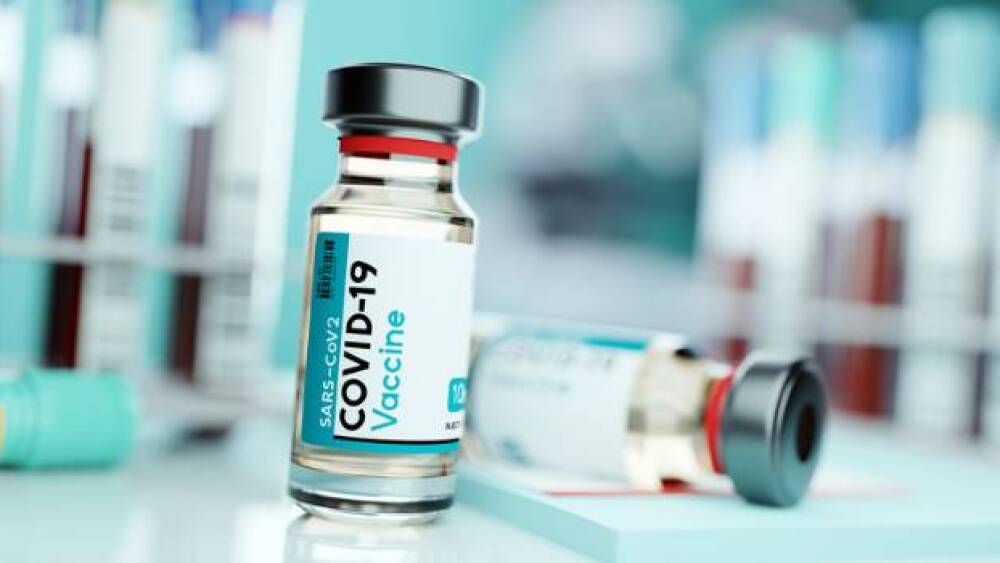As COVID-19 surges to earlier pandemic levels in the U.S., federal health officials are expected to authorize a third booster shot eight months after receiving the second of the Moderna and Pfizer-BioNTech vaccines, and probably the Johnson & Johnson vaccine as well.
As COVID-19 surges to earlier pandemic levels in the U.S., federal health officials are expected to authorize a third booster shot eight months after receiving the second of the Moderna and Pfizer-BioNTech vaccines, and probably the Johnson & Johnson vaccine as well. Read on for this and more COVID-19 news.
FDA and CDC Expected to Recommend COVID-19 Boosters 8 Months After 2nd Dose
Although not yet official, U.S. health experts are expected to recommend that all Americans, not just those who are immunocompromised, to receive a third COVID-19 booster shot eight months after receiving the second of the Moderna or Pfizer-BioNTech shots. They are not expected to be recommended until the U.S. Food and Drug Administration (FDA) formally approves the vaccines, which are currently granted Emergency Use Authorization (EUA). The Pfizer-BioNTech vaccine is expected to be fully approved in the next few weeks.
Data that has come out of Israel, which exclusively used the Pfizer-BioNTech shot, as well as studies by the Mayo Clinic, suggest protection from the vaccines, Moderna, Pfizer-BioNTech and the one-shot Johnson & Johnson, tends to wane, particularly in the face of the more highly infectious Delta variant. The vaccines still protect from severe disease and death, but not as effectively over time from mild to moderate infectious and asymptomatic infections.
Eric Topol, vice president for research at Scripps Research in La Jolla, Calif., told USA Today that data from Israel’s Ministry of Health showed that the Pfizer-BioNTech vaccine protection dropped sharply after six months, down to about 40% to 50% effectiveness against infection. It was originally about 95%. Although no one is yet sure, he thinks it’s possible that the two-dose Pfizer-BioNTech shots were set three weeks apart, and that may not have given the immune system enough time for memory B and T cells to develop as strongly as they would with a longer interval.
“This might not have happened if the spacing had been 8 to 12 weeks,” Topol said. “That’s what Canada, the United Kingdom and Scotland did.”
Pfizer-BioNTech Submitted Booster Data to FDA
Pfizer and BioNTech submitted Phase I data to the FDA in support of the third booster shot of the vaccine. They also expect to submit the data to the European Medicines Agency (EMA) and regulators around the world in the new few weeks.
“Vaccination is our most effective means of preventing COVID-19 infection—especially severe disease and hospitalization—and its profound impact on protecting lives is indisputable,” said Dr. Albert Bourla, chairman and chief executive officer, Pfizer. “Still, with the continuing threat of the Delta variant and possible emergence of other variants in the future, we must remain vigilant against this highly contagious virus.”
EMA is Evaluating Roche’s Actemra in Severe COVID-19
The European Medicines Agency (EMA) is studying the use of Roche’s Actemra (tocilizumab), typically indicated for arthritis, in hospitalized adults with severe COVID-19. A study in February demonstrated the drug decreased the risk of death in hospitalized patients with severe COVID-19, cut the time to recovery, and decreased the need for mechanical ventilation. The drug was approved in the U.S. for emergency use in hospitalized COVID-19 patients who required oxygen.
The drug is being considered because it inhibits the cytokine interleukin-6 linked to the inflammatory response to COVID-19. The EMA’s human medicines committee is running an accelerated assessment, which will include data from four large clinical trials.
COVID-19 Cases in U.S. Return to Pre-Vaccination Levels
The U.S. reported more than 900,000 COVID-19 cases last week, which is the first time since February 2021 that they have been that high. The U.S. accounts for 20% of global cases. Reported cases are rising in 46 states, according to USA Today, with hot spots in Florida, Louisiana, Texas, Oregon, Hawaii, and Mississippi. Last week, Oregon reported 11,564 cases for the week, which was 7.2% higher than its peak in December 2020.
Overall, the U.S. has confirmed 36,781,481 cases and 622,058 deaths. According to the Department of Health and Human Services, the number of hospitalized children in the U.S. is at a new pandemic high, with 1,902 confirmed and suspected pediatric hospitalizations reported as of August 14.
Babies and Toddlers Spread COVID-19 in Homes More than Teens
Babies and toddlers aren’t called “germ factories” for nothing. A new study by a Canadian public health agency reports that babies and toddlers aren’t as likely to bring COVID-19 into their homes than teenagers—likely because they don’t get out as much. However, once they are infected, babies and toddlers are more likely to spread the disease to the rest of the household. The study was published in JAMA Pediatrics.
“This study showed that even the youngest of children readily transmit the virus,” Dr. Zoe Hyde, an epidemiologist at the University of Western Australia who was not involved in the research, told The New York Times. “The key takeaway for me is that it clearly shows that there’s transmission from children occurring in the households. This means we urgently need to think about how we’re going to protect schools when they reopen shortly.”
Sinovac COVID-19 Vaccine Linked to Bell’s Palsy
A study published in Lancet Infectious Diseases found that people who took the Chinese company Sinovac’s COVID-19 vaccine, CoronaVac, had a higher risk of Bell’s palsy. Bell’s palsy is a rare type of facial paralysis that typically is mild and resolves on its own. The study also indicated that more than 90% of the cases could be resolved within nine months after corticosteroid treatment. The study confirmed 28 cases of Bell’s palsy in about 452,000 people who received the first dose of the vaccine. It was also observed in 16 cases after the Pfizer-BioNTech vaccine in more than 537,000 people.
Gritstone and CEPI Advance Second-Generation COVID-19 Vaccine Program
Gritstone bio announced it had entered into a funding deal worth up to $20.6 million with the Coalition for Epidemic Preparedness Innovations (CEPI). They will advance Gritstone’s CORAL COVID-19 vaccine program, starting with South Africa.
“COVID-19 variants are already rendering some of our vaccines less effective, so it is critical that we don’t let our guard down: we must continue to invest in critical vaccine R&D if we are to stay one step ahead of this deadly virus,” said Richard Hatchett, M.D., chief executive officer of CEPI. “CEPI is planning for the longer-term management of COVID-19 by investing in vaccines to address the threat of variants, and I’m pleased to work with Gritstone to advance the development of this innovative vaccine candidate which can be made globally accessible through COVAX if it is proven to be safe and effective.”





